Intro
Discover effective De Quervains disease treatment options, including exercises, therapy, and surgery, to alleviate wrist pain, tendonitis, and thumb strain, and learn about diagnosis, symptoms, and prevention methods for this common hand and wrist condition.
De Quervain's disease, also known as De Quervain's tenosynovitis, is a condition that affects the tendons on the thumb side of your wrist. It occurs when the tendons around the base of the thumb are irritated or constricted, leading to pain and tenderness, especially when forming a fist, grasping, or turning the wrist. Understanding the importance of treating this condition is crucial for alleviating symptoms and preventing further complications.
The symptoms of De Quervain's disease can significantly impact an individual's daily activities, making simple tasks such as lifting, gripping, or even typing painful and challenging. If left untreated, the condition can lead to chronic pain, reduced wrist and thumb mobility, and decreased overall quality of life. Therefore, it is essential to seek medical attention if symptoms persist or worsen over time. Early diagnosis and appropriate treatment can significantly improve outcomes and help individuals regain normal function and comfort in their wrist and thumb.
The prevalence of De Quervain's disease highlights the need for a comprehensive treatment guide. This condition can affect anyone, although it is more common among individuals who engage in repetitive activities that involve the wrist and thumb, such as golfers, musicians, and individuals with certain occupations that require frequent gripping or twisting motions. By understanding the causes, symptoms, and treatment options available, individuals can better manage their condition and make informed decisions about their care.
Understanding De Quervain's Disease
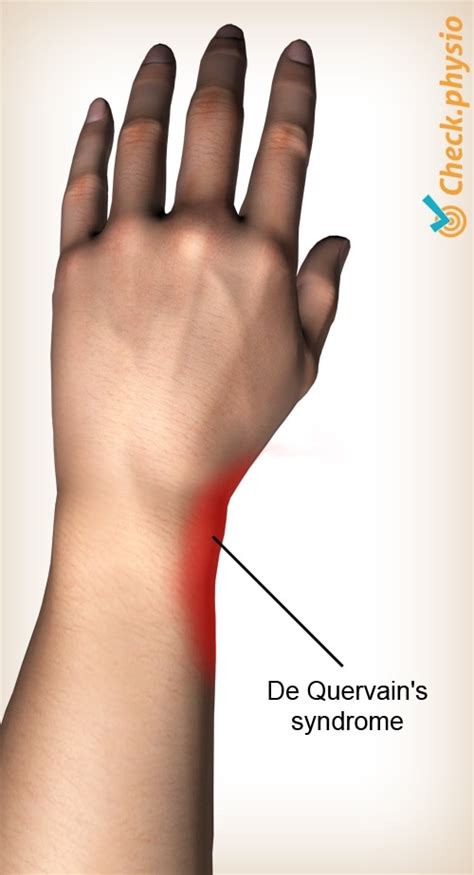
Causes and Risk Factors
Several factors can increase an individual's risk of developing De Quervain's disease. These include: - Repetitive activities: Engaging in activities that involve repetitive wrist and thumb movements can lead to tendon irritation. - Direct injury: A direct blow to the wrist or thumb can cause tendon inflammation. - Rheumatoid arthritis and other inflammatory conditions: Certain systemic conditions can increase the risk of developing De Quervain's disease. - Pregnancy: Hormonal changes during pregnancy can lead to fluid retention, which may cause tendon irritation.Symptoms of De Quervain's Disease
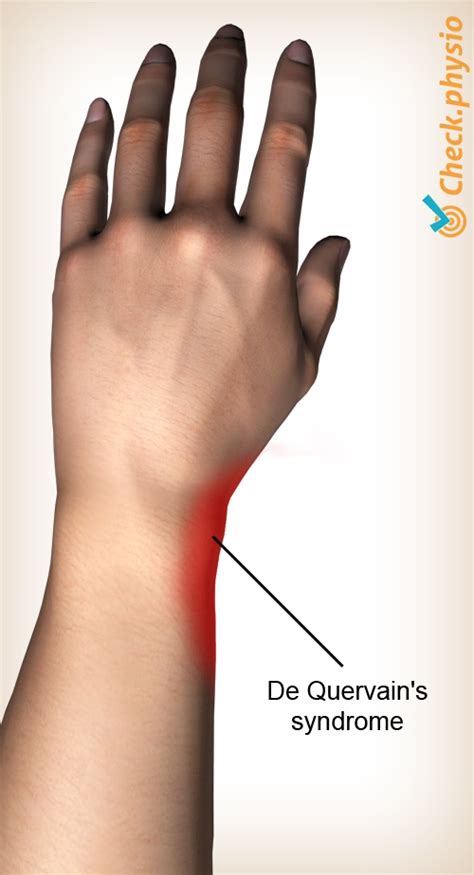
Diagnosis of De Quervain's Disease
Diagnosing De Quervain's disease involves a combination of medical history, physical examination, and sometimes imaging tests. The Finkelstein test is a common diagnostic tool, where the patient makes a fist with the thumb inside and then tilts the wrist toward the little finger. If this movement reproduces the pain, it suggests De Quervain's disease.Treatment Options for De Quervain's Disease
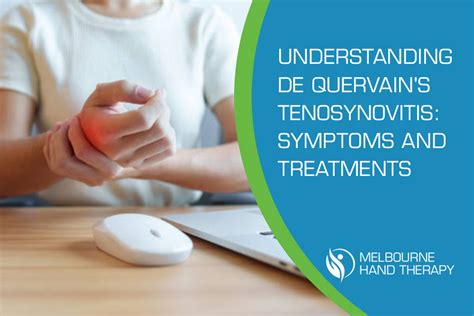
Home Remedies and Lifestyle Changes
In addition to medical treatments, several home remedies and lifestyle changes can help manage De Quervain's disease: - Avoid repetitive movements: Modify activities to reduce strain on the wrist and thumb. - Maintain a healthy weight: Excess weight can increase strain on the joints. - Exercise regularly: Gentle exercises can help maintain flexibility and strength.Prevention of De Quervain's Disease
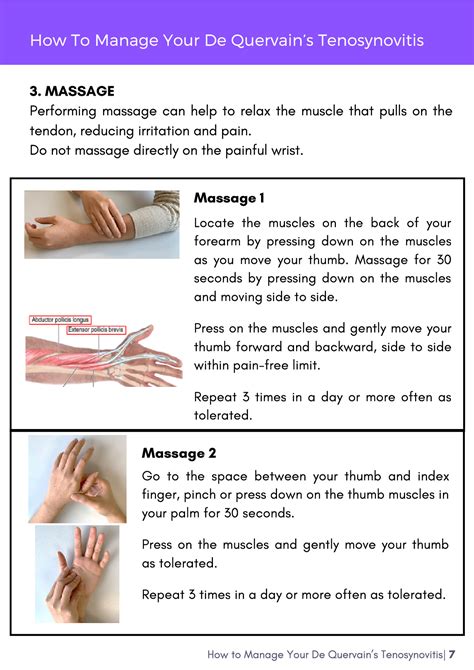
Future Perspectives on De Quervain's Disease
Research into De Quervain's disease is ongoing, with a focus on improving diagnostic techniques, developing more effective treatments, and understanding the underlying causes of the condition. Advances in physical therapy, orthotics, and possibly regenerative medicine may offer new avenues for managing and preventing De Quervain's disease in the future.Conclusion and Final Thoughts
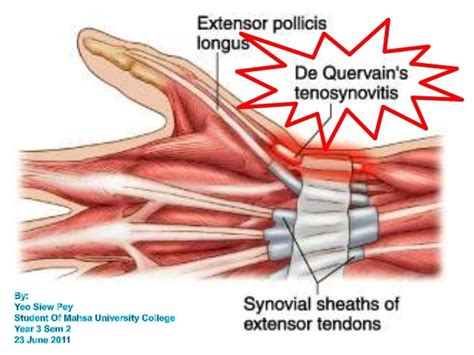
We encourage readers to share their experiences with De Quervain's disease, ask questions, or seek advice in the comments below. This open dialogue can help raise awareness and support for those affected by this condition. Moreover, sharing this article with others who may be experiencing similar symptoms can help them find the information and support they need.
What are the common causes of De Quervain's disease?
+De Quervain's disease is often caused by repetitive strain, direct injury to the wrist or thumb, and certain inflammatory conditions.
How is De Quervain's disease diagnosed?
+Diagnosis involves a combination of medical history, physical examination, and sometimes imaging tests, including the Finkelstein test.
What are the treatment options for De Quervain's disease?
+Treatment options include rest and ice, physical therapy, medications, bracing, corticosteroid injections, and in severe cases, surgery.
